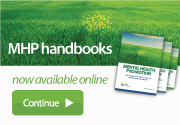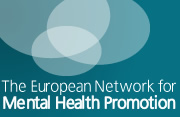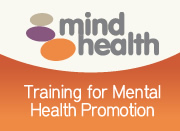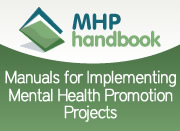Tools
- Utilities:
- Print this page
- Send this page
- Font size:
- Increase font size
- Decrease font size
Browse Database
Login, so as to add your own items.
-
Kidscreen questionnaires (KIDSCREEN-52, KIDSCRREN-27, KIDSCREEN-10 Index)
10/06/2009
The KIDSCREEN instruments assess children’s and adolescents’ subjective health and well-being. They were developed as self-report measures applicable for healthy and chronically ill children and adolescents aged from 8 to 18 years. As a result of their simultaneous development in 13 European countries, the KIDSCREEN instruments are truly cross-national HRQoL measures. KIDSCREEN-52 (duration: 15-20 min) allows detailed profile information for ten HRQoL dimensions. KIDSCREEN-27 (10-15 min), which items derived from the 52-item version, allows detailed profile information for five HRQoL dimensions. KIDSCREEN-10 Index (5 min), which items derived from 27-item version, generates a global HRQoL score for monitoring and screening uses. The KIDSCREEN instruments are available in child and adolescent as well as parent / proxy versions and have been translated and adapted for use in several languages. A score can be calculated and t-values and percentages will be available for each country stratified by age and gender. Unless it is used for commercial studies the usage is free of charge. Settings: Education
MHP Steps: Implementation -
Evidence-Based Guidelines on Health Promotion for Older People
03/04/2009
These guidelines are a comprehensive point of reference designed to develop and foster best practice in health promotion for older people. They are designed for use by health promotion practitioners, authorities at EU, national and regional levels, institutions and organisations which fund and develop health promotion programmes and projects, and by universities and research institutes. They are based on several stages of work within the healthPROelderly project, which collected information on health promotion initiatives for older people. More specifically, healthPROelderly partners carried out a literature search in 11 European countries, collected more than 160 good practice examples for health promotion initiatives inthe project database and analysed 33 best-practice examples in detail. The 16 guidelines, representing important criteria for good practice in health promotion activities for older people, are presented in a practical order starting with the guideline “Target group” and ending with “Publicity and dissemination”. Each guideline follows the same structure and contains examples of health promotion projects for older people in different European countries which can also be accessed through ww.healthproeldery.com/database for further information. (Cover text) Settings: Residence for Older People
MHP Steps: Preparation | Implementation -
Household Matters: A Good Life Round the Clock
25/02/2009
The Household Matters Tool Kit provides you with a detailed guide for how your organization can shape itself to become a resident directed service model with a well trained, empowered, and satisfied workforce. This toolkit will assure culture change sustainability and give you the resources necessary to make deep systems change in your organization. The Toolkit includes: The Leadership Book (In Pursuit of the Sunbeam), A training guide (Living and Working in Harmony), Three CD's with electronic materials (including Policies and Procedures, Quality Improvement and Human Relations) and seven DVD video training modules that demonstrate principles and applied methods in the field. Settings: Residence for Older People
MHP Steps: Implementation | Needs Analysis -
Workplaces That Thrive: A Resource for Creating Mental Health-Friendly Work Environments
25/02/2009
The program offers a free-of-charge startup package that your human resources personnel or managers can use to become familiar with practices that promote good mental health and with ways to institute them in your workplace. The resource also provides ready-to-use materials for supervisor training and for communicating with employees about their role in creating a Mental Health-Friendly Workplace. Settings: Workplace
MHP Steps: Preparation | Implementation -
Best Advice on Stress Risk Management in the Workplace - Part 1 and Part 2
25/02/2009
The primary purpose of this publication is to raise awareness and inspire action concerning the very real risks to health and safety posed by certain kinds of toxic stress in the workplace. The Best Advice on Stress Risk Management in the Workplace paves the way to health and safety promotion in the workplace. Stress risk management or stress abatement — dealing with organisational stress at its source — is a prerequisite to meaningful health and safety promotion. Other initiatives, such as the introduction of health promotion programs, can support the effectiveness of stress risk management. But stress risk management is important in its own right because it serves the basic health and safety principle of “do no harm.” The materials can be used as a presentation and can also be used on a self-instructional basis. They can also be used to assist in the development of workplace surveys and the understanding of results from these surveys. This two part document outlines the impact of stress in the workplace and includes advice on how to manage stress in the workplace. Settings: Workplace
MHP Steps: Preparation | Needs Analysis -
How Seniors Learn
25/02/2009
The learning capacity of older adults has direct, practical implications for professionals trying to educate older people and their families about health-care services and benefits, especially Medicare. In this brief, the issue of how older people learn is discussed, with reference to research from the field of cognitive aging. The authors offer tips for how you can adapt your educational programs and materials to build on individuals’ cognitive strengths and compensate for some of the losses that can occur with aging. Much of the information yielded here is influenced by the field of psychology. Studies of cognitive aging provide us with detailed information regarding the mechanisms by which humans learn, how the mind functions and whether this functioning changes as we age. As the population ages we need new approaches in which to transform and re-invent educational practices in order to meet the special cognitive needs and priorities of older learners. This brief provides advice for educational professionals about how to adapt educational programs and materials to help improve cognitive functioning and compensate for age-related cognitive decline. Settings: Residence for Older People
MHP Steps: Preparation -
Presence and Visibility of Outdoor and Indoor Physical Activity Features and Participation in Physical Activity Among Older Adults in Retirement Communities
25/02/2009
This paper examines how the presence and visibility of outdoor and indoor physical activity resources (e.g. walking path/ trail, outdoor tennis courts, gardens, etc) influences participation in physical activity among elderly residents in non-profit continuing care retirement communities and other senior housing communities. The paper reports findings from a survey of 800 such communities. A social ecological model was used to study the relationships between the environment and physical activity behavior. A fifty-two percent response rate (n=398) was obtained. Campuses with more attractive outdoor and indoor physical activity facilities had more residents participating in different types of physical activity. The study exemplifies the complexity of physical activity behavior and the difficulty in isolating the influence of the environment on physical activity behavior. As an exploratory study, this paper begins to identify how the availability of resources at the building and site level may be related to participation in physical activity. However, there is need for more focused studies that assess how the presence of resources at the building and site level influences participation in physical activity. Settings: Residence for Older People
MHP Steps: Needs Analysis -
QPR Intervention (Question, Persuade & Refer)
28/01/2009
QPR stands for Question, Persuade, and Refer -- 3 simple steps that can be learnt to help save a life from suicide. People trained in QPR learn how to recognize the warning signs of a suicide crisis and how to question, persuade, and refer someone to help. QPR-trained Gatekeepers will learn to recognize the warning signs of suicide, know how to offer hope and how to get help and save a life in one our (additional training is possible). Settings: Education
MHP Steps: Follow Up | Preparation | Implementation | Needs Analysis -
TeenScreen Program
22/12/2008
The Columbia University TeenScreen Program is a national mental health and suicide risk screening program for young people. TeenScreen is committed to making the mental health and well-being of youth a national priority and to ensure that every parent is offered the opportunity to have their teenager receive a voluntary mental health check-up (required both parental consent and youth assent for participation) for early identification of mental health problems. The program uses a questionnaire and interview process to determine if a teenager may be at risk for depression, suicide or other health problems – it is not a diagnosis, and treatment decisions, if any, are always left to parents and guardians. Settings: Education
MHP Steps: Follow Up | Preparation | Implementation | Needs Analysis -
Social and Emotional Learning (SEL)
22/12/2008
SEL is a school-based program, focused on social and emotional learning. Program involves processes to develope fundamental emotional and social competencies to recognize and manage emotions, to develope care and concern for others, to establish positive relationships, to make responsible decisions, and to handle challenging situations constructively. These skills, for example, allow children to calm themselves when angry, initiate friendships and resolve relationship conflicts respectfully, and make ethical and safe choices. Settings: Education
MHP Steps: Follow Up | Preparation | Implementation | Needs Analysis



